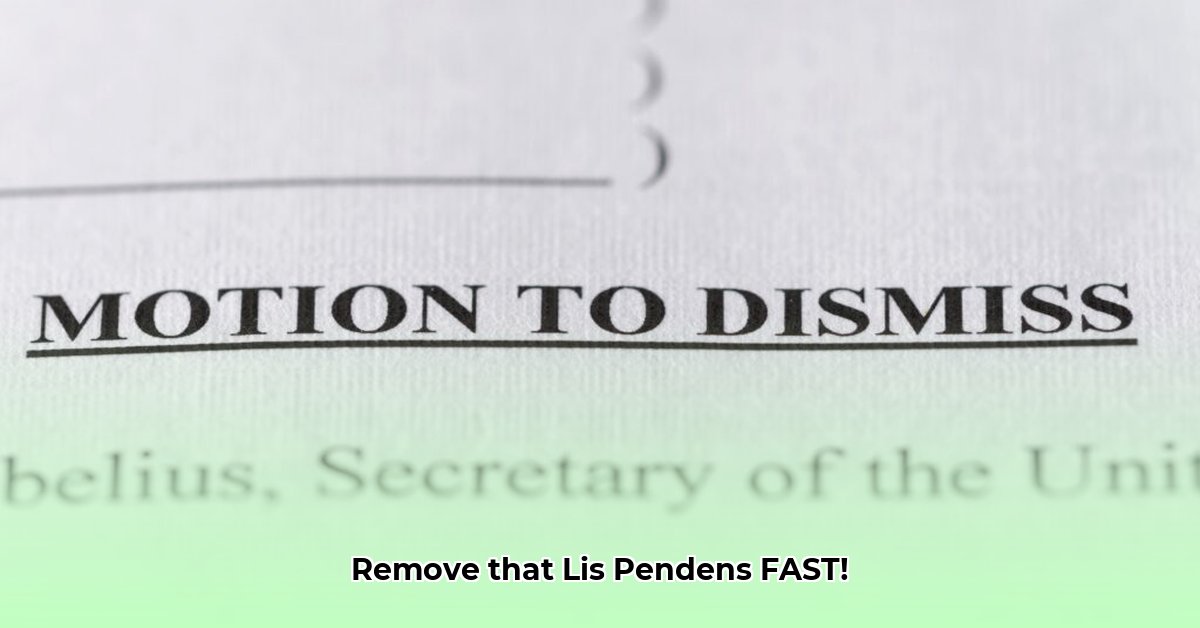
A lis pendens (a notice of pending litigation affecting your property) can severely impact your ability to sell, refinance, or even obtain a loan. This guide provides a step-by-step process for removal, emphasizing the crucial role of state-specific laws and the importance of legal counsel. Remember, this information is for educational purposes only and does not constitute legal advice. Always consult with a real estate attorney for your specific situation.
Understanding the Lis Pendens Process: A State-Specific Journey
The timeframe for removing a lis pendens varies significantly depending on your location. State laws governing lis pendens vary dramatically, making understanding your state's specific rules paramount. This is not a one-size-fits-all process; what works in California might not work in New York.
Step 1: Issuing a Formal Demand for Removal
Your initial step involves sending a written demand for the lis pendens' discharge to the party who filed it. This letter should clearly state why you believe the lis pendens is unjustified and request its immediate removal. While a sample letter can be provided (see below), it's highly recommended to have an attorney draft this letter to maximize its effectiveness. A well-crafted demand often results in a voluntary removal, avoiding court intervention. How often does a demand for removal result in successful, court-free resolution? While statistics vary by state and circumstance, many cases resolve at this stage with a well-drafted letter.
(Sample Demand Letter (Disclaimer: This is a sample only and should be adapted by legal counsel to your specific circumstances. Consult with an attorney.)
To [Plaintiff's Name/Attorney's Name], [Address]
Re: Demand for Discharge of Lis Pendens, Case No. [Case Number]
Dear [Plaintiff's Name/Attorney's Name],
This letter constitutes formal notification demanding the immediate discharge of the lis pendens filed against the property located at [Property Address], Case Number: [Case Number]. We believe this lis pendens is wrongfully filed for the following reasons: [Clearly state your reasons]. Please file a Notice of Discharge within [Number] days.
Sincerely, [Your Name/Attorney’s Name]
Step 2: Court Intervention: Filing a Motion to Expunge
If your demand for removal is unsuccessful, your next step involves initiating court action to expunge (remove) the lis pendens. This requires filing a formal motion with the court, supported by legal arguments and evidence. This process is significantly more complex and requires legal expertise. What documentation is needed to file a motion to expunge a lis pendens? This varies by state, however, generally, you'll need the lis pendens itself, the complaint in the underlying lawsuit, supporting documentation, and your property records. An attorney will guide you through this complex process.
Step 3: Navigating Court Procedures and Timelines
The time it takes to resolve a lis pendens through court action depends heavily on several factors:
- Court Backlog: Heavily burdened courts can significantly delay proceedings.
- Case Complexity: Contested cases with complex legal issues naturally take longer.
- Jurisdictional Variations: Court efficiency and state laws significantly impact timelines.
A simple, uncontested case might resolve within 3-6 months. However, complex, heavily contested cases can drag on for over a year. What is the average timeframe for resolving a lis pendens through court action in [State Name]? This information is best obtained by consulting with an attorney in the relevant jurisdiction.
Step 4: Preventing Future Lis Pendens Issues
Proactive measures can significantly reduce the risk of future lis pendens:
- Thorough Due Diligence: Conduct extensive research before purchasing property to identify potential legal issues.
- Strong Contracts: Ensure your real estate contracts are well-drafted and protect your interests.
- Proactive Legal Counsel: Consulting an attorney throughout the real estate process provides invaluable protection.
Conclusion: The Importance of Legal Counsel
Removing a lis pendens is a complex process requiring legal expertise. This guide provides a general overview, yet individual circumstances and state laws demand professional guidance. Do not attempt to navigate this process alone. Contact a qualified real estate attorney as soon as possible to protect your property rights. Where can I find a qualified real estate attorney? Your state bar association's website is an excellent resource for locating attorneys in your area. They often provide referral services.